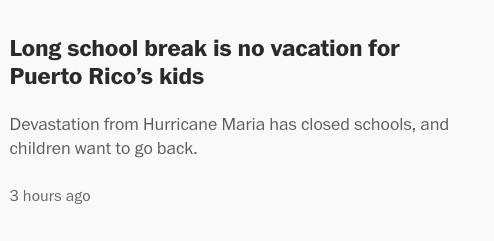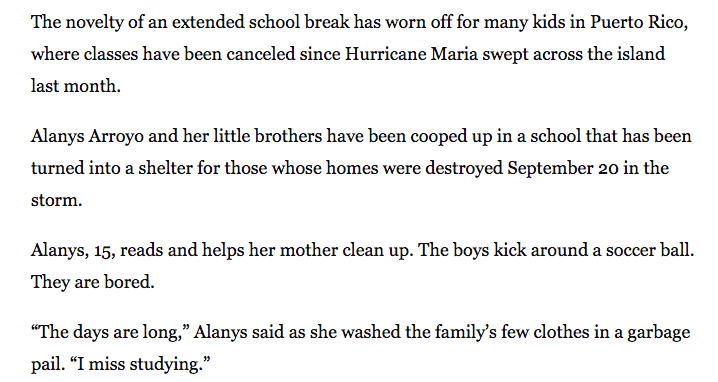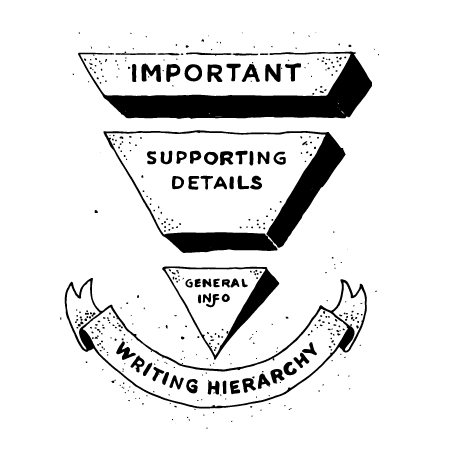What You Can Learn About Copywriting from Journalists

Journalists capture a reader’s attention. They’re used to writing for people on-the-go and competing for readers’ attention, ideas familiar to every content creator today. Luckily, you can learn what makes journalists tick and apply it to your website’s content.
The driving force behind many of journalism’s techniques is time—the reader’s time. Journalists assume their readers are busy and have other priorities. You should too. Even if you build up a reputation for quality, relevant content on your blog and earn dedicated readers, you shouldn’t take their attention for granted. Like a journalist, a copywriter should craft valuable content that is easy to read. That’s how to build an audience—and a great reputation.
Here are some copywriting skills you can steal from journalists.
Include information in the headline
It all starts with a headline—on Facebook, in a phone notification, trending on Twitter, or in a newspaper. When you read a headline you hopefully know what the article is going to be about and why it’s interesting. It makes you want to know more.
That’s the kind of headline good copywriters should craft to gain website visitors and build a relationship with potential customers. So take notes!
Here is an example of a great headline and subhead combination from the New York Times. It succinctly articulates a piece of information you may or may not know—Puerto Rico’s schools are still closed—and points out the unexpected—that children want to go back to school. The subhead is used to clarify.
Share information a reader might not know and some they definitely don’t know. It’s an enticing combination.
Now some may argue about the legitimacy of Buzzfeed’s viral news content, but we can’t deny their headlines always seem to get the best of us. Here’s an example of a headline that includes key information, and compels readers to want to read the details.
Facts are often intriguing, exciting, or downright funny. Capitalize on a reader’s desire to know more by using facts from the story in your headline. FOMO is real.
One last example also comes from the New York Times. This author could have written “The Free Meal Returns on Some Airlines,” which would be true and interesting, but the headline becomes much more compelling by adding a modifier to “The Free Meal” to remind readers why this news is interesting. Browse the NYT website and you will quickly find just how often and well this strategy is employed by their writers.
Including a brief modifier in this headline makes the new information seem more surprising and compelling.
Give your audience a taste of the article they will find behind the headline and you’re more likely to reach the right audiences. It also will remind you to use one or more of the keywords that define your article in your title tag and H1 (on-page headline) for maximum search engine optimization. Not sure what that all means? Check out this article about using metadata to optimize your content’s reach.
Craft a lede
When a reader clicks through to your article, they should be able to very quickly learn what the article might be about. In journalism, this is accomplished with a lede or lead, which is an introductory sentence that offers a macro-level overview of the article. It can extend into two or even three sentences, but the first sentence is the most important. And for good reason: it’s the first thing your reader sees.
A lede allows readers to immediately know whether an article will be of value to them. It’s your job to convince them to stay. A good lede will retain readers and encourage them to explore further on your site or even complete a micro-conversion like a newsletter sign-up because they want more. Plus, you can craft your meta description like a lede to use those same benefits to drive more clicks to your site from the get-go.
This lede introduces the NYT article about Puerto Rico we looked at earlier. The first sentence expands upon what was said in the headline, adding and clarifying information. It clearly sets expectations for what is to come while emphasizing why it is interesting. The second sentence immediately follows through on the lede’s implicit promise by introducing an example of a child and a school in the hurricane’s aftermath.
This lede encourages reader retention by making an argument for why they should continue reading: to learn unexpected information on how the hurricane affected a specific Puerto Rican population.
Some best practices for writing an effective lede:
- Avoid ambiguity. Vague promises for what’s to come are not as enticing as clear ones.
- Don’t include unnecessary details like proper nouns your audience will be unlikely to recognize or anything extraneous. See the Inverted Pyramid section below.
- Speak in accessible terms. Use your reader’s language, but don’t get too bogged down in specific lingo.
- Communicate how this article’s topic is unique. What’s the new angle you’ve provided? How is your take fresh?
- Introduce a reason to care, even if it’s implicit. Try tying it back to what matters to your audience.
- Be consistent. Make sure your lede is an accurate portrayal of what you will cover in the post.
Follow these tips to create a great lede that hooks your audience and makes them more likely to read the rest of your post.
Write for the skimmer
Writing with the intent to be ignored feels unnatural, even a bit embarrassing, but it’s essential to put the reader’s experience first. Cater to their desire to skim, and you’ll be an irreplaceable resource for a busy person.
1) Aim to satisfy
Very short articles are often actually hard to skim. Instead, write nice crisp sentences you can bold or place at the beginning of paragraphs to guide a skimming reader through your main arguments. Then they can pause over what they want to know more about, or ideally decide the entire piece is worth a more thoughtful encounter and slow down. When they slow down they should be rewarded by examples, directions, and specific actionable tips.
Ask yourself: Is the article legible from a macro level? Could someone read just the subheads and bolded text or first sentences and still learn something useful? Is it also valuable on a micro level? Could those who know the basics of your topic still learn something?
2) Use short paragraphs
Frequent paragraph breaks create approachable chunks of text that are concise and cohesive with transparent organization. Create a new paragraph for every shift in topic. It’s easy to read—or skim.
Don’t be afraid of short sentences, either. They’re easier to follow and absorb.
3) Build an inverted pyramid
Start with what matters most so if a user bounces or clicks on another interesting headline on your page (nice work!) they received maximum value for the time they did spend on your page. Journalists describe this as the inverted pyramid, meaning you start with the broadest and most pertinent information and move down to less essential details.
Image courtesy of Whistle Studios
Newsrooms developed this system precisely to deal with the fickle reader that every content creator and copywriter faces today. It also allows editors to swiftly cut an article to fit allotted space by chopping from the bottom up.
Ask what’s newsworthy
Journalists develop a keen sense for finding stories. You might not be covering the news, but that doesn’t mean you can’t study what is newsworthy to your audience by looking at your article’s performance and even conducting reader surveys. Cover things your readers will find pressing and important.
Whenever possible, write about something because you know it’s “newsworthy.” This could be something topical, concrete, helpful, and/or interesting to your audience. Whether it’s the introduction of a new product line, a company update, a helpful guide to pursuing further education, or an opinion piece about industry tools, ask yourself if this carries weight for your audience.
I’m not the only one thinking about the links between hard news and copywriting or blogging. There is also a content marketing strategy known as newsjacking that takes advantage of surging attention around breaking news.
—
Craving more? Learn how you can get your audience to make content for you or browse our other content articles.





